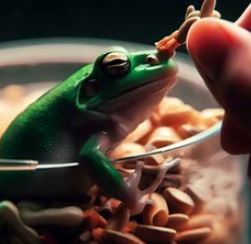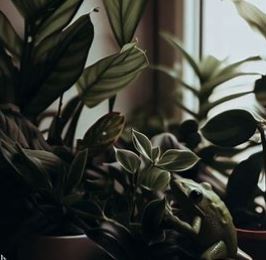How Long Can a Frog Live Inside a House?”
Frogs are a common sight in many households, especially in areas with a lot of greenery. However, not everyone knows how long these amphibians can survive indoors. Some people might wonder if keeping a frog inside a house is safe or healthy for the animal. In this article, I will discuss the lifespan of frogs, the factors that affect their survival in indoor environments, and some tips on how to provide a suitable habitat for pet frogs. By the end of this article, readers will have a better understanding of how long a frog can live inside a house and what they can do to ensure the well-being of their pet frog.
The Lifespan of a Frog Indoors Can Be Influenced by Several Factors
The lifespan of a frog can be influenced by several factors, including species, diet, habitat, and environmental conditions. Different species of frogs have varying lifespans, ranging from a few years to over a decade. For instance, the North American bullfrog has an average lifespan of 7-9 years, while the African clawed frog can live up to 25 years in captivity.
Diet for An Indoor Frog

Diet is another factor that can affect the lifespan of a frog. A balanced and varied diet can help ensure that the frog gets all the necessary nutrients to maintain its health and longevity. A diet rich in protein, such as insects and other small invertebrates, is essential for the growth and development of juvenile frogs. However, some adult frogs may require a more herbivorous diet, such as algae or plant matter.
What should I feed my indoor frog to make it live longer?
The specific diet and nutritional needs of an indoor frog can vary depending on the species of frog you have. Not unlike pet turtles. However, a well-balanced diet typically consists of a variety of live or frozen insects such as crickets, mealworms, waxworms, and occasionally small mice or other small vertebrates depending on the frog species.
It’s important to ensure that the insects are gut-loaded (fed nutritious food) before feeding them to your frog. Gut-loading will provide your frog with the necessary nutrients it needs. You can also supplement your frog’s diet with vitamin and mineral supplements designed for reptiles and amphibians.
In addition to a healthy diet, make sure that your frog has access to clean, fresh water at all times. Providing a clean environment, appropriate temperature, and humidity levels can also help ensure the longevity of your indoor frog. It’s best to consult with a veterinarian or a herpetologist for specific advice on the nutritional and environmental needs of your particular species of frog.
Habitat for An Indoor Frog
Habitat is also an important factor that can impact the lifespan of a frog. Frogs require suitable habitats to thrive. Factors such as temperature, humidity, and water quality can affect their overall health and longevity. For example, frogs living in polluted water bodies may be more susceptible to disease and have a shorter lifespan. Additionally, frogs living in habitats with predators or other threats may have a higher risk of mortality.
What’s the best habitat for an indoor frog?
The best habitat for an indoor frog will depend on the specific species of frog you have. The species of frog is almost as important as the question of how long a frog can live inside a house – It depends on the frog! However, in general, frogs require a moist and humid environment with access to water for swimming and soaking.

- Choose a suitable enclosure: The size of the enclosure will depend on the size of your frog. A good rule of thumb is to provide at least 10 gallons of space per frog. The enclosure should have a secure lid to prevent escape.
- Provide a substrate: Frogs need a substrate to help maintain humidity and provide a place to burrow. A suitable substrate could be coconut coir, sphagnum moss, or a mixture of the two.
- Add plants: Live plants not only add to the aesthetics of the enclosure but also help maintain humidity levels. Choose plants that are safe for your frog species.
- Maintain humidity: Frogs require high humidity levels, around 60-80%. This can be achieved by misting the enclosure with water or using a reptile fogger.
- Provide a water source: Frogs need access to clean water for swimming and soaking. The water should be changed regularly to prevent the growth of harmful bacteria.
- Provide a hiding place: Frogs are nocturnal and need a place to hide during the day. This can be achieved by adding a cave or other hiding place in the enclosure.
Here are some basic guidelines for creating an indoor frog habitat:
Remember to research the specific needs of your frog species and adjust the habitat accordingly.
Whether a frog is living inside or outside can also affect its lifespan. Captive frogs may live longer than those in the wild. This is due to the controlled environment and reduced exposure to predators, disease, and other hazards. However, captive frogs may also face health problems if they are not provided with appropriate environmental conditions, diet, and care.
Types of Indoor Frogs
Some common frog species that people might keep as pets or find in their houses include the American green tree frog, the African clawed frog, and the Pacific tree frog.
The American green tree frog has an average lifespan of 5 to 8 years in the wild, but they can live up to 16 years in captivity with proper care. Living inside a house can extend their lifespan due to the controlled environment and consistent food supply.
The African clawed frog has an average lifespan of 10 to 15 years in captivity. They can they can live up to 25 years with proper care. They are a hardy species and can adapt well to living in a house, but their lifespan may be affected by factors such as water quality, diet, and temperature.
The Pacific tree frog has an average lifespan of 3 to 5 years in the wild, but they can live up to 8 years in captivity. Living inside a house can also extend their lifespan due to the controlled environment and consistent food supply.
It’s worth noting that while living inside a house can provide a controlled environment and consistent food supply, it’s important to ensure that the frog’s habitat is suitable for their needs. Factors such as temperature, humidity, diet, and lighting can all play a role in a frog’s lifespan and overall health. Additionally, regular veterinary checkups are recommended to monitor the frog’s health and address any potential issues.
How to Know if Your Indoor Frog Isn’t Thriving
While it’s true that some species of frogs can survive inside a house, it’s important to note that they may not be thriving in this environment. Signs that a frog is not doing well in its indoor habitat include:
- Lethargy: If your frog seems to lack energy and spends most of its time sitting still, it may be a sign of stress or illness.
- Lack of appetite: A healthy frog will eat regularly and with enthusiasm. If your frog has stopped eating or shows little interest in food, it may be a sign of underlying health issues.
- Skin problems: Frogs can develop skin problems due to poor living conditions, such as dry skin or infections. If you notice your frog’s skin looking dull or discolored, or if it has lesions or sores, it may be a sign that your frog is not thriving in its indoor environment.
It’s important to pay attention to your frog’s behavior. You should seek veterinary care if you suspect that your pet is unwell. An experienced veterinarian can help you identify and treat any health issues. They will provide advice on how to improve your frog’s living conditions. Providing a suitable habitat, including proper temperature, lighting, and humidity, can go a long way in ensuring your frog’s health and happiness.
Pingback: Animals That Hop - Small Animal Planet
I don’t think the title of your article matches the content lol. Just kidding, mainly because I had some doubts after reading the article.